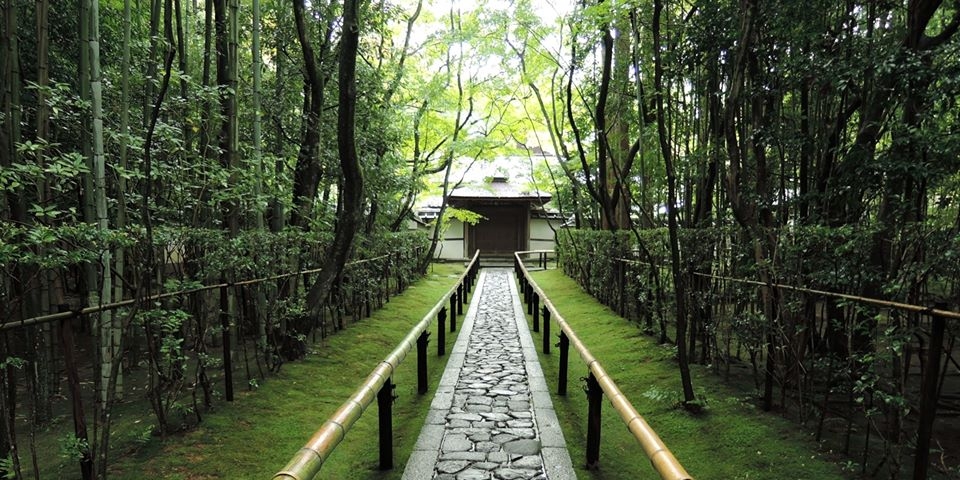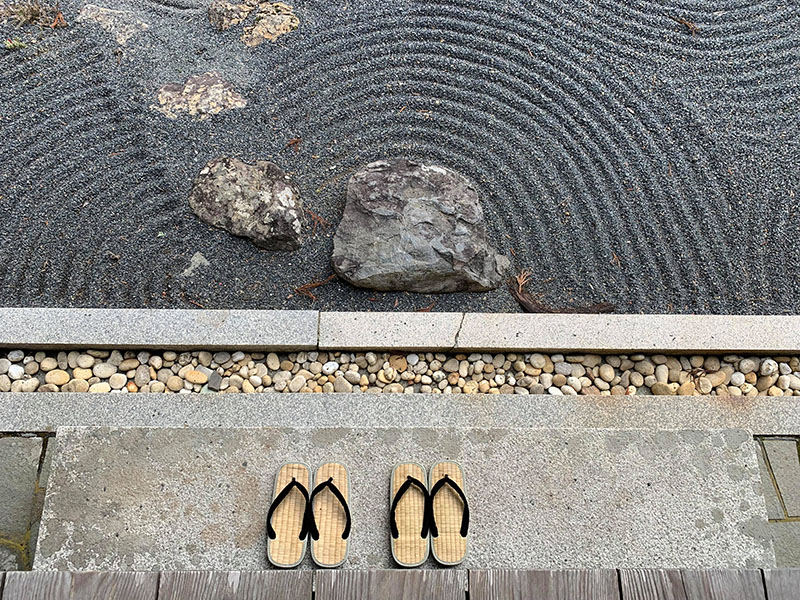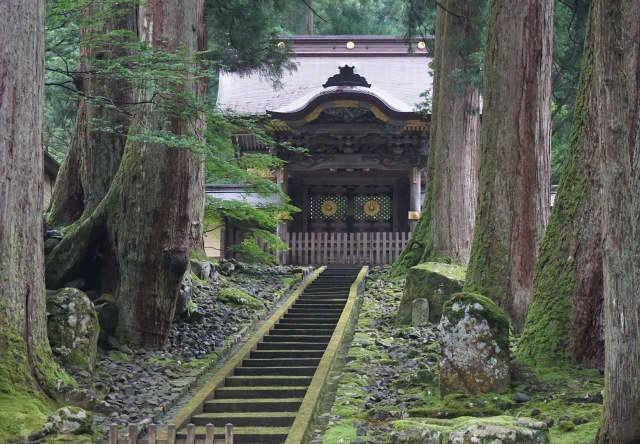
My first Zazen experience
Many years ago, when I first started on my spiritual path, a friend suggested that since I lived in Japan I should go to a temple and try Zazen meditation. He said it would help me quiet my mind and also help me to center.
After a brief search I was fortunate to find a temple in the shita-machi (the old town) in Tokyo that not only had regular Zazen sessions, but also offered them in English, as the priestess who led the meditation was American. So one Saturday morning I left my home at 5:30 in the morning to participate in my first Zazen that was scheduled to start at 7:00.
I still remember the excitement of stepping into the tatami room leading to the Zendo (meditation hall) and receiving my zafu – a hard, round cushion to sit on. I got instructions on how to sit so my body was comfortable and a few general rules on how to start and end the meditation. For example – one should always enter the zendo with their right foot. This may sound silly, but it is an effective exercise in mindfulness. If you are not focused you will forget the rule. Nobody told me how to meditate so I asked what I should do. The answer to that was ‘Nothing. Just sit.’ The only instruction I got was to keep my eyelids slightly lowered to decrease external distractions but to not close my eyes completely, to avoid drifting into sleep. That was really confusing – my mind wanted to know what to do which was precisely why instructions were not provided. Not being given a way to do things makes it easier to let go of thinking and quiet the mind.

Kotouin Temple Kyoto
How to practice Zazen
There are several ways to do zazen. In one of them the focus is on concentration: the practitioner is instructed to focus on their breath. In the Rinzai school, more advanced practitioners are given a koan, which is a story, a statement or a question that can not be resolved through logical thinking. One has to let go of the mind to receive awareness of what the koan is about. Here is a famous koan to give you an idea what they are like:
Once a monk made a request of Joshu.
“I have just entered the monastery,” he said. “Please give me instructions, Master.” Joshu said, “Have you had your breakfast?
“Yes, I have,” replied the monk.
“Then,” said Joshu, “wash your bowls.”
The monk had an insight.
 “Am I the student in the midst of my life, waiting for life to happen? How do we enter our life fully? It is right here. How do we want to live? Can we allow all the joys and sorrows to enliven us? How can we give ourselves fully to our lives, moment to moment? Don’t wait. Life is always right here.”
“Am I the student in the midst of my life, waiting for life to happen? How do we enter our life fully? It is right here. How do we want to live? Can we allow all the joys and sorrows to enliven us? How can we give ourselves fully to our lives, moment to moment? Don’t wait. Life is always right here.”
The Soto school of Buddhism practices shikantaza, or ‘just sitting.’ There is no particular focus, rather the practitioner intends to stay in the present moment fully aware of what passes through their mind and of the world around them. The temple where I practiced Zazen belonged to the Soto school, hence the instruction I received was to “just sit.”
So what happens when we are present and aware in the moment?
 I continued to go to Zazen for almost two years. I loved the peaceful and calm energy of the Zendo, the scent of burning incense and the simplicity of the ritual: we entered the room in a line and walked along the wall to our place to sit. We bowed to the seat, then turned around and bowed to our fellow practitioners. Three sharp rings of the bell announced the beginning of the meditation and then we sat, I would let my mind relax and quiet but kept the intention to be aware. Forty-five minutes later another ring of the bell would break the magic and announce the end of the Zazen. Every session left me calm and peaceful, as if I had soaked in the energy of the room. Yet, nothing extraordinary happened. Until one day, when just as we had started the Zazen the quiet of the Zendo was shattered by the sound of a pneumatic drill coming from outside. Talk about distraction! There was no way you could ignore that. However it was a very different thing to experience the noise from a place of mindfulness. As I intended to stay present and not to allow my mind to highjack the moment with its judgements, I entered a state where I was completely aware of the sound, experiencing it but it didn’t affect me. It just was as I too was just being there, experiencing it. There was no discomfort, no irritation or anger. Just sound. This experience opened the door to the awareness that how we experience life depends on how we judge it. Take the judgment away and everything becomes the same – just an experience.
I continued to go to Zazen for almost two years. I loved the peaceful and calm energy of the Zendo, the scent of burning incense and the simplicity of the ritual: we entered the room in a line and walked along the wall to our place to sit. We bowed to the seat, then turned around and bowed to our fellow practitioners. Three sharp rings of the bell announced the beginning of the meditation and then we sat, I would let my mind relax and quiet but kept the intention to be aware. Forty-five minutes later another ring of the bell would break the magic and announce the end of the Zazen. Every session left me calm and peaceful, as if I had soaked in the energy of the room. Yet, nothing extraordinary happened. Until one day, when just as we had started the Zazen the quiet of the Zendo was shattered by the sound of a pneumatic drill coming from outside. Talk about distraction! There was no way you could ignore that. However it was a very different thing to experience the noise from a place of mindfulness. As I intended to stay present and not to allow my mind to highjack the moment with its judgements, I entered a state where I was completely aware of the sound, experiencing it but it didn’t affect me. It just was as I too was just being there, experiencing it. There was no discomfort, no irritation or anger. Just sound. This experience opened the door to the awareness that how we experience life depends on how we judge it. Take the judgment away and everything becomes the same – just an experience.
Experiencing Zen for yourself in Japan
Visiting Japan offers the opportunity to experience first hand this ancient aspect of Japanese spirituality. There are many temples around the country where one can attend a Zazen session. Some of my favorite ones are in the picturesque coastal town of Kamakura, about an hour away from Tokyo. The home of many Zen temples, Kamakura is a true box of treasures for those who want to soak in the spirit of Zen.
Another famous place to visit is Eiheiji – the main temple of the Soto school in Fukui Prefecture. The serenity of its surroundings – the mountains of Fukui on the northwestern coast of Japan, makes this temple a true embodiment of its name ‘The Temple of Eternal Peace.’ Some temples provide lodgings (shukubō) to visiting pilgrims and tourists with overnight accommodation within their grounds.The Hakujukan Zen village, adjacent to Eiheiji temple is a class higher – it is “a facility combining the features of a traditional inn and a pilgrims’ stay”. It is a hotel where guests can, through experiencing zazen at the temple, come to feel the heart of Zen.
There are other temples in Kyoto or Chichibu near Tokyo that are wonderful to visit too. No matter where you choose to have your Zen experience, you will be sure to enjoy this unique aspect of Japanese spirituality and benefit from the calm and peace it gifts to its practitioners.
The impact of Zen Buddhism on the culture and life in Japan is deep and profound. The discipline practiced in Zen and Zazen have created an ideal that influences all actions in daily life. All aspirants in Japanese society respect the calmness of the Zen master and follow it one way or the other. There is hardly any aspect of the traditions we associate with Japan that have not been influenced by Zen: the art of flower arrangement, the stone gardens and the tea ceremony, the Sumi-e style of painting all originate in the philosophy of Zen. One of our next posts will be dedicated to these beautiful off shoots of the ancient tradition.
– Makayla, The Spirit Of Japan Tours
* The Spirit of Japan Tours organizes private and group tours to temples and sites where you can experience the richness of Japan’s spirituality and traditions. Please, message us for more information about our future tours.



